
British postcard. Photo: Gaumont Company, London.
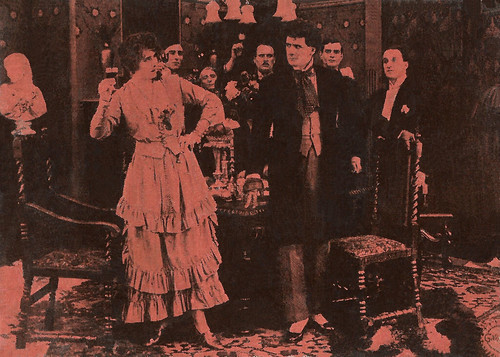
Spanish collector's card (cromo) for Chocolate Pi, series 3, no. 3. Photo: Gaumont. Aurele (or Aurelio) Sydney as Ultus and Mary Dibley as The Grey Lady - Mary Ferris in the serial Ultus and the Grey Lady (George Pearson, 1916). Spanish title: Ultus y la dama gris.
In Ultus and the Grey Lady (George Pearson, 1916), Ultus is hunting Eugene Lester, the man who betrayed him at the end of the previous film, Ultus, the Man from the Dead (George Pearson, 1915). The traitor has hired Conway Bass the detective to protect him. The Grey Lady and her followers take an interest in Ultus and his quest...

Spanish collector's card (cromo) for Chocolate Pi, series 4, card 4. Photo: Gaumont. Scene card for Ultus and the Grey Lady, II/The Track of Lester (George Pearson, 1916), starring Aurele Sydney. Spanish title: La pista de Lester.

Spanish collector's card (cromo) for Chocolate Pi, series 5, no. 1. Photo: Gaumont. Aurele Sydney in the serial Ultus and the Secret of the Night (George Pearson, 1917). Spanish title: El secreto de la noche.
In Ultus and the Secret of the Night (George Pearson, 1917), Ultus is still being pursued by detective Conway Bass and decides to hide out in disguise in a quiet country village, but he hears stories from the local children of a ghost haunting a mysterious manor. Little daunted, he investigates and discovers that the source of the screams is a mistreated little girl whom he determines to rescue from her abductors...
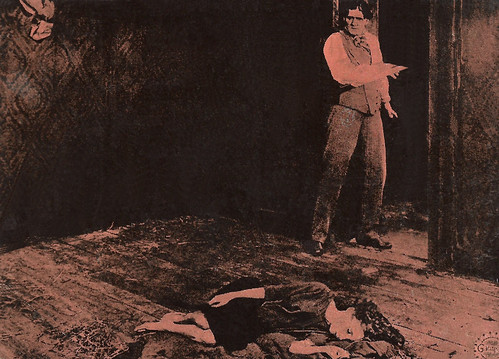
Spanish collector's card (cromo) for Chocolate Pi, series 5, no. 3. Photo: Gaumont. Aurele Sydney in the serial Ultus and the Secret of the Night (George Pearson, 1917). Spanish title: El secreto de la noche. The girl could be Dolly Morgan.
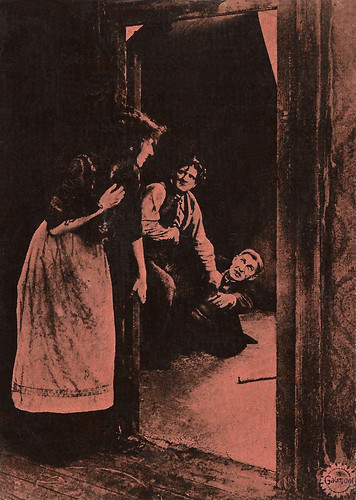
Spanish collector's card (cromo) for Chocolate Pi, series 5, no. 5. Photo: Gaumont. Aurele Sydney in the serial Ultus and the Secret of the Night (George Pearson, 1917). Spanish title: El secreto de la noche.
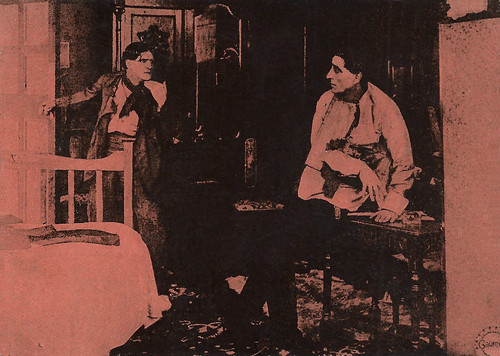
Spanish collector's card (cromo) for Chocolate Pi, series 6 no 5. Photo: Gaumont. Aurele Sydney in the serial The Capture of Ultus/Ultus and the Secret of the Night, II) (George Pearson, 1917. Spanish title: La Captura de Ultus.
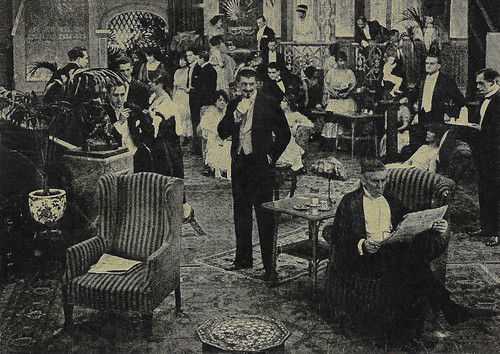
Spanish collector's card (cromo) for Chocolate Pi, series 7, no. 4. Photo: Gaumont. Aurele Sydney in the serial Ultus and the Three-Button Mystery (George Pearson, 1917). Spanish series title: El misterio de los tres botones. On this card, Ultus wears a false moustache and goatee to catch the bad guy.
In Ultus and the Three-Button Mystery (George Pearson, 1917), Ultus makes a daring escape from the Old Bailey. He becomes involved in the case of kidnapping of a Cabinet Minister by the agents of a Foreign Power. He is aided by faithful assistant Dick and the star-struck Elsie Meredith. But Elsie's role is not to be quite what she expects...

British postcard in the Pictures Portrait Gallery Series by Ed. Pictures Ltd., London, no. 43. Aurele Sydney.
Sources: Vittorio Martinelli, Maciste & Co.; Rachel Low, The History of British Film, 1914-1918; Kevin Brownlow, The Parade’s Gone By; and IMDb.
No comments:
Post a Comment